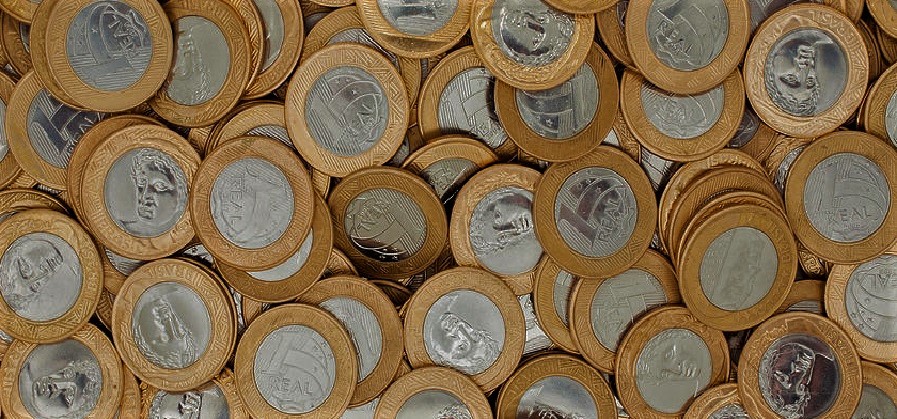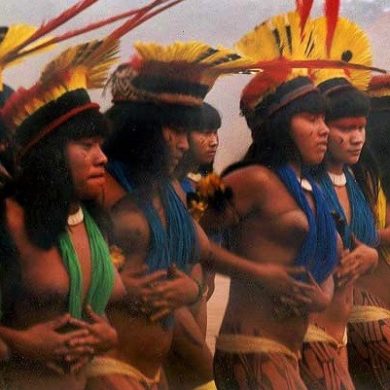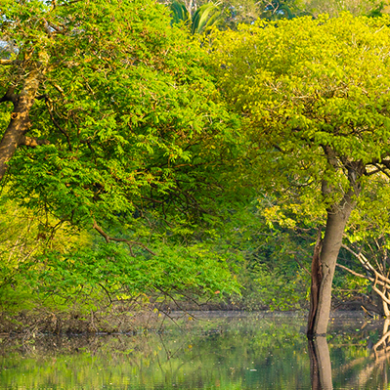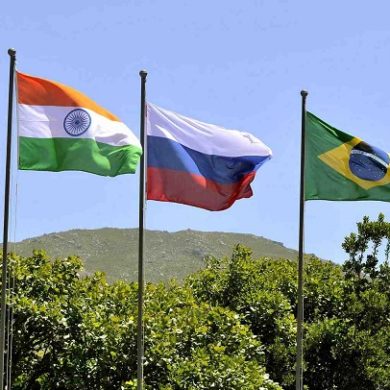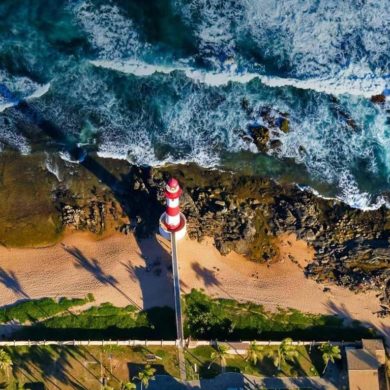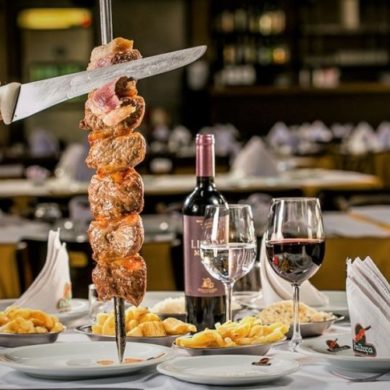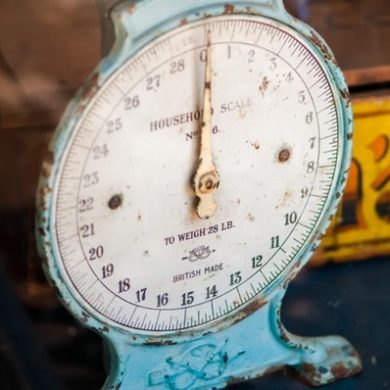The currency in Brazil today is the Real, (plural “reais”). Its sign is “R$” and its ISO currency code is “BRL”.
This section of our Brazil travel guide will examine how the currency in Brazil became the Real and its journey down through the ages. Throughout its history, Brazilian currency has changed many times due to hyperinflation and economic goals. Starting with the arrival of the currency with European colonizers, we chart its course through time, with reference to how its fluctuations in value affected Brazilian society. Finally, we present the value of the Real today, how it is issued and how it has performed under different Brazilian political leaders.
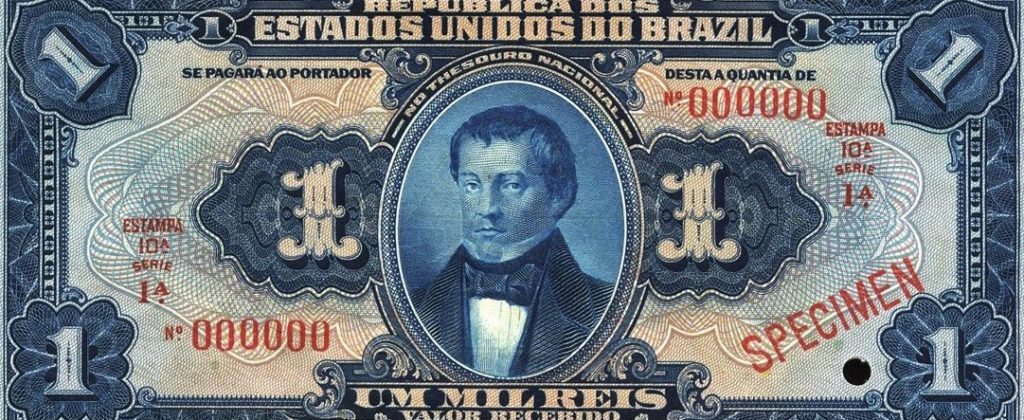
The Real first arrives in Brazil
The Real was the first official currency of Brazil, arriving with the Portuguese and the Dutch around the mid – 17th century. The name real, means “royal” in Portuguese and it was also the name of the currency in circulation in Portugal from the 1400´s until 1911. Since the earliest colonial days in Brazil, the Real was in use. The symbol for the “old Real” as it is known nowadays, was “Rs$. Note, the last character that looks like a dollar sign is called “cifrão” in Portuguese and was always written with two vertical strokes instead of one.
The plural form of the old Real is “réis,” as oppose to the plural form of the modern real which is “reais.” The practical unit of the old Real changed many times throughout its lifetime due to the effects of inflation. First becoming “mil reís” meaning one-thousand réis then becoming “conto de réis” which was the equivalent of one million réis!
Nowadays, you can hear the older terms mostly being used in old Brazilian song lyrics, such as in this extract from a traditional song:
“Capénga ontem teve aqui
Deu dois mil réis ao papai
Deu três mil réis ao mamãe
Café e açúcar ao vovó
Dois vinténs para mim, só”
Extract from “Capénga”
Although Brazil gained its independence from the Portuguese crown in September 1822 when the declaration of Dom Pedro founded The Empire of Brazil, the Real remained as its official currency. The old currency of Brazil went through many reforms over the years, but the original Brazilian real that circulated in the 1750´s for example, came in denominations of 5, 10, 20 and 40 réis copper coins. Silver coins circulated in denominations of 75, 150, 300 and 600 réis and gold coins were available in 1000, 2000, 4000 and 6400 réis.
The first paper money used in Brazil was to pay diamond prospectors. The notes came in various denominations because their value was marked on the note at the time of issue. Various banks throughout Brazilian history issued their own denominations of the Brazilian Real including Banco do Brazil, Banco do Maranhão and Banco da República dos Estados Unidos do Brasil. Regional governments also issued their own banknotes in the 1890s, and from 1924 to 1942.
The Cruzeiro becomes the new Brazilian Currency
The Cruzeiro replaced the old Real in 1942 and various currencies circulated in Brazil under the name cruzeiro until 1994. Its symbol was “Cr$.” From 1986 to 1989 the cuzeiro was replaced by the “Cruzado,” and from 89 – 90 the “Cruzado novo.” There were three distinct currencies in Brazil, which carried the name cruzeiro. The first cruzeiro known as the “Cruzeiro antigo” (old Cruzeiro) circulated from 1942 – 1967. The second cruzeiro, known as the “Cruzeiro Novo” was in use from 1970 – 1986. (Cruzeiro Novo means “new Cruzeiro” in Portuguese.) Finally, the third and last cruzeiro was used between 1990 and 1993.
The name cruzeiro comes from “Cruzeiro do Sul” which is the Portuguese for the Southern Cross or Crux constellation. This constellation is more or less only visible in the Southern hemisphere and remains a popular icon in Brazilian culture, still in use on the Real coin today and taking pride of place on various badges and coat of arms´.
The modern Real, the currency of Brazil today
Today in Brazil, the currency is once again the Real. Around since the early 1690´s the name “Real” has managed to survive all the way to the present day (except for the period between 1942 – 1994 when the Brazilian cruzeiro took its place). The plural form of the modern real is “reais” and its sign is “R$”. Its international standard currency code is BRL, and it is issued by “Banco Central do Brazil” (The Central Bank of Brazil).
An interesting fact is that the modern real is equal to 2.75 × 1018 (2.75 quintillion!) of Brazil´s original réis. At the time of writing (July 2019), the US Dollar is equivalent to 3.76 reais.
The Real is divided into 100 equal “centavos.”
Brazilian Real Coins
The current series of Real coins was released in 1998. Although the central bank stopped producing 1 centavo coins in November 2005, they are still in circulation and still count as legal tender. A funny and interesting thing you might see on your journey to Brazil, is a small stack of ten 10 centavo coins taped together to serve as 1 Real!
Each centavo coin bears the Southern cross constellation on one face. Pedro Álvares Cabral, the discoverer of Brazil, is featured on the one-centavo coin, made from copper – plated steel. The five – centavo coin, also made from copper – plated steel bears the face of Joaquim José da Silva Xavier, famously known as “Tiradentes.” He was a prominent figure of a revolutionary movement in Minas Gerais, during which he fought for independence from the Portuguese crown and because of this was publicly hanged. Tiradentes is remembered in Brazil as a national hero.
Brass – plated steel is the material used to make the ten – centavo coin and it features Dom Pedro I, also known as “The Liberator,” he became the first emperor of Brazil in October 1822 after declaring Brazil´s independence from Portugal on September 7th of the same year. The 25 – centavo coin is also made from brass – plated steel and on it you will find Field Marshall Deodoro da Fonseca, the first president of the Republic of Brazil, he led the coup that toppled Emperor Pedro II and with him went the Empire of Brazil. The 50 – centavos coin is made from steel and is adorned by the face of José Paranhos Jr, one of Brazil´s most revered ministers for foreign affairs. He managed to peacefully resolve all of the problems Brazil had with its neighboring countries regarding the borders. Finally, the 1 – real coin is made from an inner coin of steel surrounded by a ring of brass. The outer brass ring is decorated with a Marajoara art pattern, traditional on the Amazon estuary island, Marajó. In the centre is the Éfigie da República, symbol of the republic of Brazil.

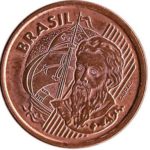

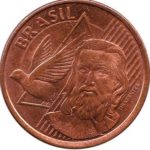
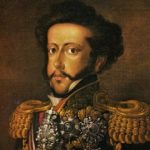
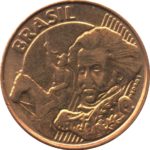

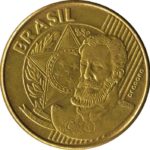
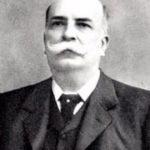
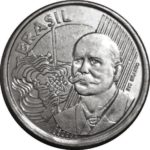
The 1 Real Coin
The 1 Real coin features Marajoara art and the effigy of the Republic as shown. The effigy “Efígie da República” as it is known in Portuguese, is the symbol of the Republic in both Brazil and Portugal. She may be depicted wearing a crown of bay leaves and a phrygian cap and sometimes with only the cap.
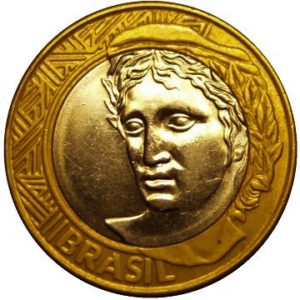
Below are examples of the art that inspire the design of the 1 Real coin. The first is an example of Marajó art, which you can see on the outer ring of the 1 Real coin. Marajó is an island on the Amazon estuary roughly the size of Switzerland! It is famous for its ceramic pottery featuring the same art, which give evidence to the fact that the island was inhabited from as early as 1400BC.
Also below is an example of allegoric art depicting the Brazilian republic, by Manuel Lopes Rodrigues in 1896. The woman in the painting is the “Efígie da República” also seen on the 1 Real coin. Brazil first became a republic in 1889, after which this symbol became widely used to sygnify it.
Finally, we have the Southern – Cross constellation in the night sky. It is mostly only visible from the Southern hemisphere, although it is possible to see it on rare occasions from parts of the Northern hemisphere. Brazil is the largest country in the Southern hemisphere and so it has become a symbol of both Brazil and the other countries that lie south of the Equator. It is seen on all real coins.
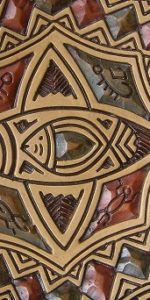
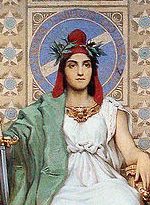

Brazilian Real Banknotes
The latest series of Brazilian banknotes began circulating in 2010 and come in denominations of 2, 5, 10, 50 and 100 Reais. On the 2 Real banknote you will find the Hawksbill Turtle. This critically endangered species is found in Brazilian waters and considerable efforts are ongoing to combat its declining numbers. These majestic marine creatures were traditionally hunted for their beautiful shells. The 5 Real banknote features a Great Egret, a large heron – like bird, that can spear fish with its long sharp bill. It displays beautiful white plumage. The 10 Real banknote features the Green – Winged Macaw, quite a famous symbol of tropical Brazil, it is also one of the largest species of Macaw found in the country. The Golden Lion Tamarin will be found if you study a 20 Real note, named after their large manes, these incredible monkeys call Brazil´s Atlantic rainforest home. Unfortunately, due to logging and careless human behavior their habitat and numbers are dwindling. Look at a 50 Real note to find the mythical Jaguar, king of the Pantanal, where you can embark on a trip to see these majestic cats. Finally, if you are lucky enough to feast your eyes on a 100 Real note, you will see the image of a “garoupa” or dusky grouper. This is a highly prized fish in the southern coastal states of Brazil.
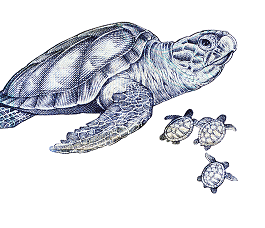
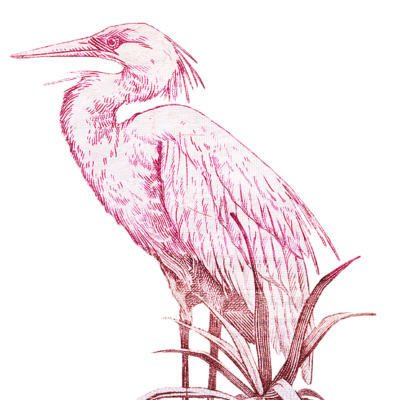
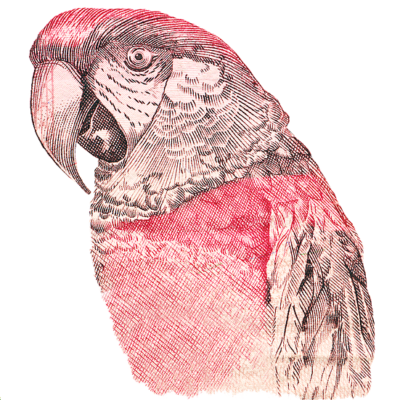

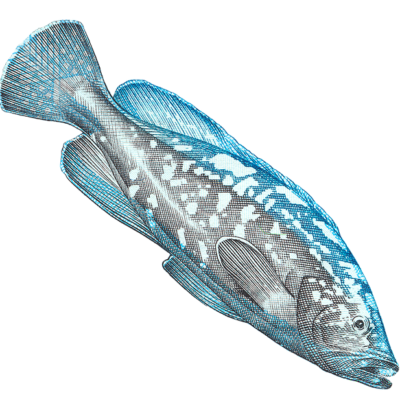
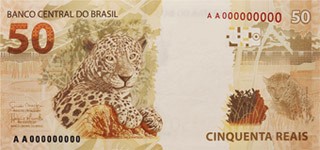
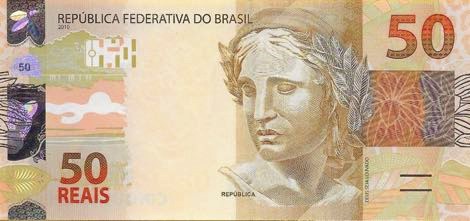
The story of modern Brazilian Currency
Plano Real
In 1994 the “Plano Real” was introduced to control inflation and to stabilize the Brazilian currency and economy. Then Minister for Finance, Fernando Henrique Cardoso (who later became president), led this rigorous campaign during the presidency of Itamar Franco. The Plano Real (or “Real Plan” in English), was designed to strengthen Brazilian currency by creating the “Unidade Real de Valor (URV)” translated as the “Unit of Real Value” in English. This was a non – monetary currency used as a reference against the cruzeiro – real, therefore, it was free from the effects of hyperinflation. One of the most significant steps taken as regards this plan was replacing the cruzeiro real on 1st July 1994, with the modern real at an equal rate to the URV.
The Plano Real also involved a series of economic reforms at governmental level allowing inflation to be kept under control for the following years. These reforms included control of expenditure through high interest rates and also the adoption of liberal trade policies to allow the increase of market competition. The plan initially worked and the real gained value against the US dollar, backed by large capital investments in Brazil, particularly in 1994 and 1995. After 1995 however, the Real experienced a gradual downfall culminating in a crisis in 1999.
In 1999 the Brazilian Central Bank announced that the Real would no longer be pegged to the US dollar leading to a 4.4% growth in the economy in 2000.
The Real under Lula
The presidential elections in 2002 had a significant effect on the newly floating Brazilian currency. Leading the polls from the beginning was Luís Inácio Lula da Silva, a left – wing candidate who advocated the protection of workers, and was opposed to capitalist “exploitation.” Having this ex – metalworker favourite to win the election caused the real to tumble against the dollar from R$2.50 to R$4.00 in November 2002 when Lula was elected President. Investors and the public started to lose confidence in the Brazilian real.
Much to the surprise of economists, supporters and opposition to Lula, when Lula took office in 2003 he did not overhaul the economy as many expected he would. In fact, Lula continued many of the policies of the previous government in that he targeted the control of inflation and maintained the floating currency. He even made sure to appoint conservative ministers to certain positions such as the Ministry of Finance and the Revenue Service. Some of Lula´s critics accused him of going back on his word as he increased the minimum wage a lot less than he promised during his presidential candidacy.
All in all the Brazilian currency flourished and the economy grew rapidly during the Lula years (he was re – elected in 2006). The GDP grew by 5.7% in 2004 and 3.2% in 2005, 4% in 2006, 6.1% in 2007 and 5.1% in 2008. From 2008 to 2010 during the global financial crisis, the Brazilian economy continued to grow ending 2010 with a figure of 7.5%, contrary to what one would expect!
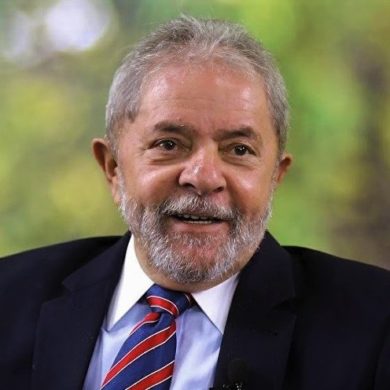
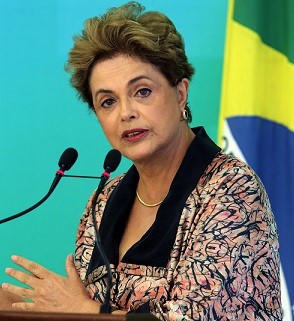
The 2014 Crisis
The Brazilian real faced a gradual fall from 2011. By 2015, it had fallen from 1.55 against the US dollar to 4.0 reals. In 2014, Brazil experienced a severe economic crisis which wasn´t helped by the country´s serious political mess. The president Dilma Rousseff, was impeached as part of Operação Lava Jato (Operation Car Wash) and Lula was arrested and imprisoned.
In 2015, the GDP of Brazil fell by 3.9% and 3.6% in 2016. This crisis had serious negative implications throughout the country; the unemployment rate rose from 6.8% to 12% by the end of 2016. There was outrage against the establishment, in particular towards the leadership of Dilma and the workers party (PT). Many believe this to be a pivotal point in Brazilian politics, in that the Brazilian public looked for an alternative to PT and so was a great aid in the election of current right – wing president Jair Bolsonaro.
The recession ended when the GDP rose by 1.4% in the first quarter of 2017.
The Real under Bolsonaro
During Bolsonaro´s candidacy the real rallied, a right wing president who would put economic growth first was “what the markets wanted.” Investors worldwide experienced increased confidence in the Brazilian currency. It was even reported that the Brazilian economy was on the road to recovery.
When Bolsonaro took office on the first of January 2019 he left the task of fixing the broken economy and weak Brazilian currency to businessman Paulo Guedes. The real was still in the same place it was back in 2014. Since the new President took office, economists have halved their expectations for economic growth in 2019, and there is not much positive speculation as far as improvement goes on the meagre figures of 2017 and 2018.
The value of the real has not improved during 2019. The Bolsonaro government blames the country´s economic mess on the government of Dilma Rousseff who was impeached because of accusations that she hid her cabinet´s overspending. Lowering the fiscal debt (the amount of money spent by a country above its revenues) has been the focus of the Bolsonaro government, characterized by proposed cuts to the pension system. Some Brazilians retire in their 50´s with very generous benefits for civil servants especially!
The Brazilian government claims that if nothing drastic is done, the country´s debt will be equal to the size of its economy by 2023. A worrying figure for Brazilians and the world economy alike.

How to write numerical “Reais”
In Brazil, a period or full – stop (.) is used to mark thousands and a comma (,) to mark fractions. Therefore, if you look at a bar menu you may see that a caipirinha costs R$ 7,00. Something that costs 7000 Reais would be marked as R$ 7.000. Also, when there are centavos or fractions for example, 1225 Reais and 14 centavos will be written as R$ 1.225,14 and not R$ 1,225.14 as in the UK and the US.
Money Museum – Brasília
If you are interested in the history of Brazilian currency or old means of payment in general, why not visit the “Money Museum” in Brasilia? It is located on the first floor of the central bank and exhibits coins, banknotes, gold and other objects that have represented value in some way or other. Look out for the largest gold nugget ever found in Brazil, weighing 60.820kg!
